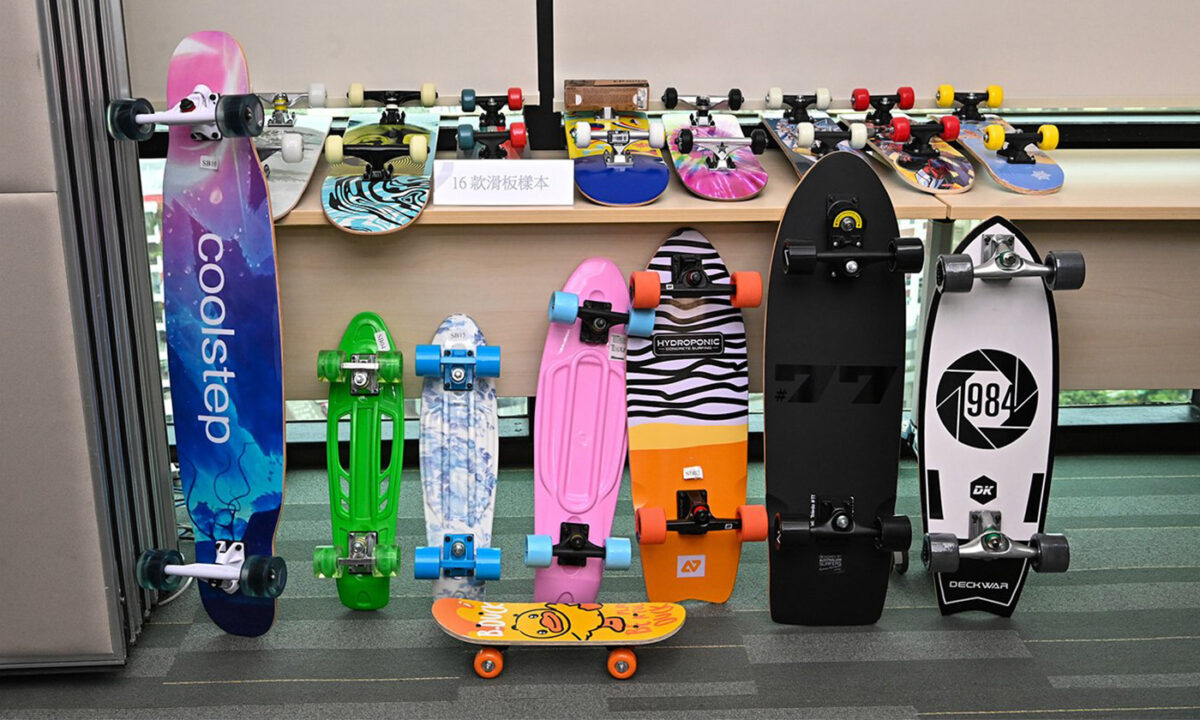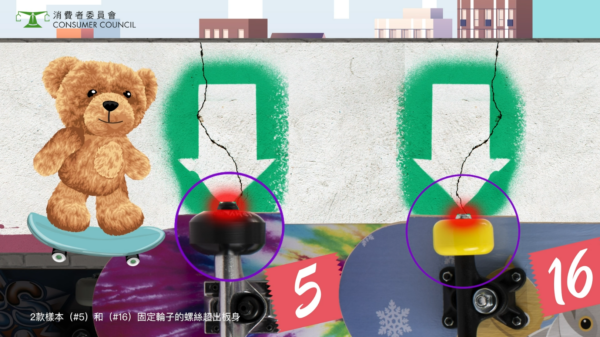


In a recent survey conducted by the Hong Kong Consumer Council, 12 out of the 16 skateboard samples failed to meet European safety standards.
The survey highlighted several issues, including insufficient labeling information on 11 of the samples, which failed to display the maximum weight capacity on their packaging.
There are five samples that exhibited unsafe structural features, such as pointed ends, screws protruding from the skateboard body, and excessively smooth surfaces. These design flaws pose a significant safety risk during usage.
Furthermore, the drop test conducted on the samples showed that ten failed to meet the required standards. Half of the tested skateboards couldn’t withstand the weight of the testing tool, leading to fractures and potential injuries. This indicates insufficient support strength, compromising control and stability while skateboarding.
The study followed the European skateboard safety standard EN13613, which classifies skateboards into two weight capacity levels. Class A skateboards can support weights from 20 kg to 100 kg, while Class B skateboards are suitable for weights ranging from 20 kg to 50 kg. Of the 16 samples, only four met these safety standards: three Class A and one Class B samples.
While there are no specific regulations in the United States mandating weight capacity labeling for skateboards, manufacturers should provide this information to ensure consumer safety and enable informed purchasing decisions.
To make an informed skateboard purchase, consumers are advised to carefully review the labeling information on the packaging, including the maximum weight capacity.
It’s also important to inspect the skateboard’s structure before use. Additionally, wearing proper protective strongly recommended to mitigate the risk of injuries.
Most samples lacked safety guidelines on their labels. It can be challenging for consumers to determine the weight capacity of skateboards due to insufficient labeling. None of the 11 samples indicated the maximum weight capacity on the packaging, which increases the safety risk for consumers.
For example, adults should not use skateboards designed for children’s weight limits, and individuals weighing over 50 kg should choose skateboards with higher weight capacities, such as Class A skateboards.
According to European safety standards, skateboards should display the maximum weight capacity, product name or number, manufacturer or supplier information, and indicate compliance with safety standards.
It is also recommended to advise users to wear protective equipment. Although there are no specific regulations in Hong Kong requiring weight capacity labeling for skateboards, it is essential for all manufacturers to voluntarily provide this information to protect consumers’ right to accurate information.
In recent years, there has been an increasing number of young children engaging in skateboarding. Considering that three Class B samples were marketed for children aged 3 and above, priced between HK$80 (US$10.2) and $150 (US$19.1), the Consumer Council conducted toy safety tests based on European standards. After reasonable misuse testing, these three samples had no parts detachment or sharp edges, meeting the relevant requirements.
However, none complied with the standard labeling requirements, lacking relevant safety guidelines. As skateboards are classified as ride-on toys, they should include appropriate warning labels such as “Caution: Use protective gear and do not use on roads” and reminders to use them under parental supervision and in safe areas.
The labeling on these three toy skateboards needed to be increased. It’s important to note that, according to European standards, the maximum weight capacity for toy skateboards is 20 kg, typically designed for recreational use by children aged four or below weighing less than 20 kg rather than for performing stunts.
However, parents should also know that the American Academy of Pediatrics does not recommend skateboarding for children under 5. This is because children under 5 are still developing control over their large and small muscles and their reflexes, and skateboarding may increase the risk of accidents.
Using protective gear and assessing one’s abilities are crucial for skateboarding safely. In the United States, reports indicate tens of thousands of accidents occur yearly due to unsafe skateboarding practices, such as high-speed, riding on roads, or attempting tricks resulting in collisions or loss of control.
Therefore, consumers should exercise caution and prioritize safety while engaging in skateboarding.
Here are some tips to consider when choosing and using skateboards:


